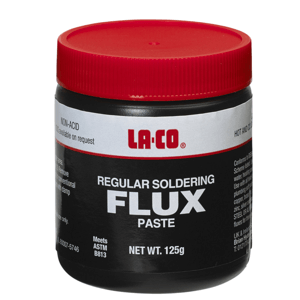Soldering Flux Paste COSHH Assessment Form

A pre-filled COSHH Assessment Form for Soldering Flux Paste, with some example text reading:
Health risks: May cause skin and respiratory irritation and eye chemical burns.
Skin contact: There may be mild irritation at the site of contact.
Eye contact: There may be irritation, redness and risk of chemical burns. The eyes may water profusely.
Ingestion: There may be soreness and redness of the mouth and throat. There may be stomach discomfort.
Inhalation: There may be respiratory irritation.'
Soldering flux paste is a highly specialised material used in the soldering process, especially in surface mount technology (SMT), where it is essential for efficiently joining small electronic components to printed circuit boards (PCBS). This compound is a carefully formulated blend of fine solder powder suspended in a flux medium, both of which play critical roles in ensuring the formation of strong, reliable solder joints.
The flux itself is a chemical agent that cleans the surfaces of the metal components by removing oxides and other surface contaminants, creating an optimal environment for solder adherence. By promoting the wetting properties of the solder, flux enhances the flow and penetration of the molten solder into the joint, crucial for achieving a robust connection.
Solder paste, specifically, is composed of microscopic solder particles uniformly dispersed within the flux. This unique composition enables precise application to the designated pads on a circuit board. Once the components are properly positioned on these pads, the assembly undergoes a heating process, which causes the flux to melt and activate. As this occurs, the solder particles flow together, allowing the material to bridge the connection between the component leads and the PCB pads, solidifying into a strong conductive joint upon cooling.
Fluxes are available in various forms, including paste, liquid, and as a core material in solder wire. Notably, “no-clean” flux compositions have gained popularity in SMT applications due to their ability to leave minimal residue after soldering, which reduces the need for extensive post-soldering cleaning processes and minimizes the risk of contamination.
The use of solder paste in SMT is particularly advantageous due to its compatibility with advanced application techniques such as screen printing and stencil application. These methods facilitate the accurate and efficient placement of very small components, helping to achieve the precision necessary for modern electronic circuits.
Overall, the role of flux in the soldering process is paramount. It not only prevents oxidation of the metal surfaces during the soldering operation but also assists the solder in achieving optimal flow and wetting. This results in the formation of durable and effective bonds between metal components, which are essential for the longevity and reliability of electronic devices.
This document is:
- Recognised by local authorities
- Recognised by principal contractors
- Suitable for CDM sites
- Approved by H&S managers
If you want others to have confidence in your company, download and buy the proper documents today.
As with all our documents, our risk assessments are in Word™ format and available for instant download and use. You only need to buy them once.
Once you buy and download this document, it's yours for life to use repeatedly.
Why not browse the HSEDocs catalogue of method statements, risk assessments, COSHH assessments, or industry-specific packages?
And for safety training relevant to your job, visit our online training courses.
GET THIS DOCUMENT
£8.99+VAT
- Available in Word™
- Fully customisable
- Add your Company Logo
- UK & EU Compliant

 CART
CART 